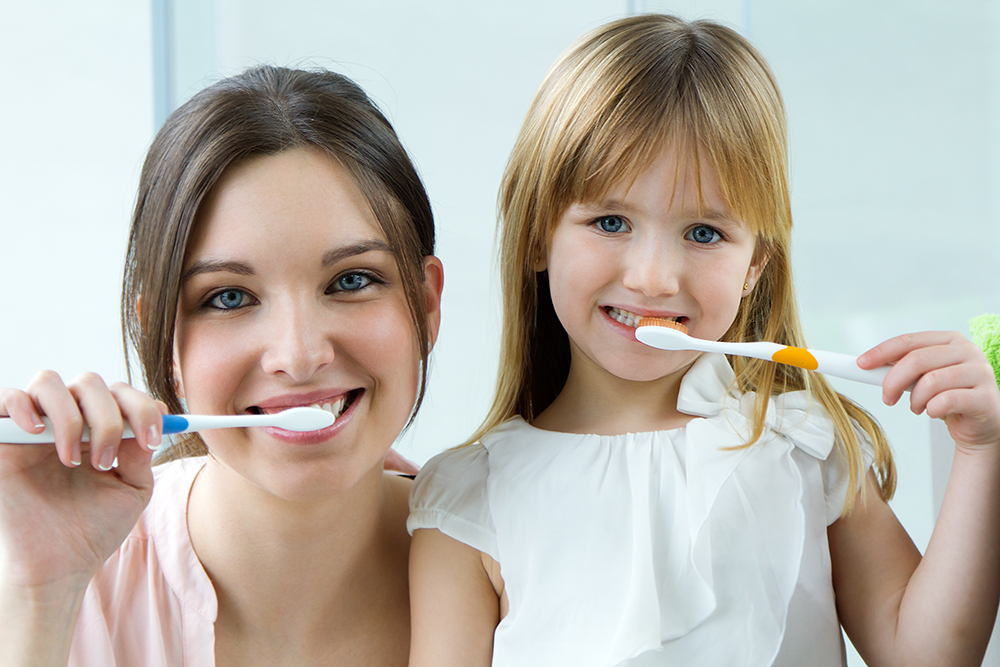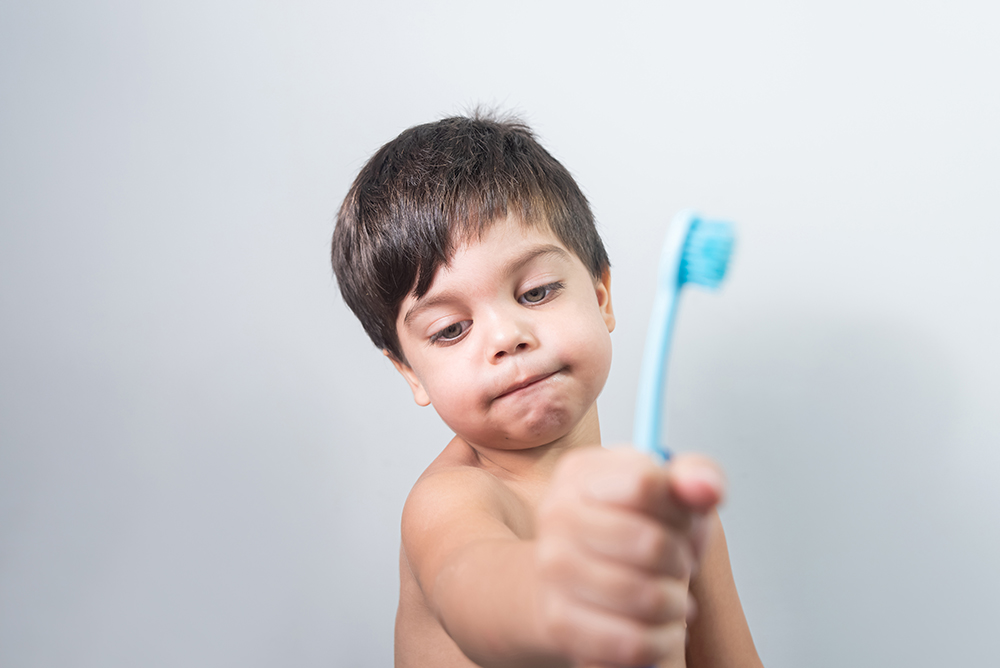
If you’re not sure where to start when it comes to teaching your child good oral care habits, don’t worry! Just like any new skill, it’s important to start simple and help them learn the basics.
5 tips for taking care of a child’s mouth and teeth
A child’s oral care has the same guidelines as an adult oral care program. To help your children protect their teeth and gums and significantly reduce the risk of tooth decay, teach them to follow these steps:
- Teach your child how to brush their teeth at least twice a day.
- Eat a balanced diet that limits starchy or sugary foods.
- Make sure the child is drinking water or using dental products with the right level of fluoride.
- Take your child to the dentist for regular checkups and preventive care.
- If you have an injury that results in cracked, broken, or falling teeth, see a dentist right away.
How to encourage a child to brush her teeth?
Dental health for children starts with proper brushing techniques. Brushing is easy for kids. All you need is a little creativity. Try making oral care a group activity in the morning or evening. There are many songs to sing while brushing your child’s teeth. You can read a 2-minute story with a funny voice or play a short story or podcast. By doing such things, you can make cleaning your teeth a habit.Caring for a child’s mouth and teeth can be overwhelming. Try to motivate your children as much as possible so that they feel excited and empowered to keep their teeth and gums healthy. Also, take your kids to a pediatric dentist who knows how to make dental checkups less scary. Pediatric dental offices often have toys, games, and videos to help children relax and enjoy going to the dentist. 
When should a child start using dental floss?
Cleaning between the teeth with dental floss and water pressure (Water Flosser) removes food particles and plaques that cannot be removed by brushing. You should start using these tools for your children from the age of 4. By the time they reach the age of 8, most children can start using these devices on their own.
How to prevent tooth decay in childhood?
The first visit of the child to the dentist should be done within six months after the eruption of the first tooth. This can easily be done with the parent holding the child on their lap and the dentist or dental hygienist sitting next to the parent. A dental hygienist can quickly check a child’s mouth for decay or abnormalities.In addition, parents will receive instructions on good oral habits for their child to reduce oral bacteria. Preventing baby tooth decay—also called childhood tooth decay—is one of the most important issues in baby dental care. This condition occurs when the baby falls asleep with milk, formula or juice in the mouth.Sugars accumulate in the mouth and can lead to cavities in the upper and lower teeth. To prevent tooth decay, never let the baby sleep with a glass in the mouth and limit breastfeeding while sleeping. If the baby needs something to suck on to fall asleep, give him a bottle filled with water or a pacifier.
Are dental sealants an effective protection against cavities?
Fissure sealants (made of colorless or white plastic material to protect the surfaces of teeth that have deep fissures and pores) prevent tooth decay – cavities – by sealing small cracks in tooth enamel. Dental sealants act as a very effective barrier against caries. Using sealants is painless and can be done in one dental visit. Ask your dentist about the benefits of sealants for your child’s teeth.
What is fluoride and what is the right amount for children?
Fluoride is a natural mineral found in most oral care products such as toothpaste to strengthen tooth enamel and prevent tooth decay. In many developed countries, safe and effective amounts of fluoride are added to municipal water sources for proper tooth development. If the water source is not fluoridated, ask your dentist or pediatrician if your child needs a fluoride supplement. 
How important is diet for taking care of a child’s mouth and teeth?
A balanced diet is very important for the development of strong and healthy teeth. However, that doesn’t mean you should ban their favorite snacks and treats! When they enjoy these foods, serve them as part of their meal instead of just as a snack. The extra saliva produced during meals helps wash sugar and acid-forming starches from the mouth. A child’s diet should include a full range of vitamins and minerals, plenty of calcium, phosphorus and adequate levels of fluoride.A balanced and nutritious diet is an essential aspect of dental care. Foods rich in calcium and protein, such as dairy products and lean meat, play an essential role in protecting and restoring tooth enamel.You should avoid consuming large amounts of candy, soft drinks, cookies, or other sugary foods and drinks that can lead to tooth decay. If the family regularly consumes sugary foods and sodas, start cutting back on some of these items and replacing them with healthier options, such as fresh fruit and water.
What to do if a child breaks or falls out a tooth?
If your child breaks or loses a tooth, or when there is an injury to your child’s mouth such as a fractured, cracked or chipped tooth, you should contact your dentist immediately. They can determine the appropriate treatment. If possible, keep the broken part of the tooth and take it with you to the dentist. If a tooth is completely removed from the mouth due to damage, keep it moist and take the tooth to your dentist immediately if possible. Do not wipe or clean the teeth. What should be done?Keep the tooth in milk or use a tooth preservation product until you go to the dentist. It may be possible for the tooth to be placed back in the child’s mouth. Great dental health for kids starts with setting a good example. Remember, anything that makes dental care fun, such as brushing with your child or letting them choose the toothbrush, will encourage your child to maintain good oral health.Start teaching these habits early, so you can help your child have a bright, healthy smile for a lifetime. The above information is for educational purposes only. This content is not intended to be a substitute for professional medical advice, diagnosis or treatment. Always seek advice from your dentist, doctor or other qualified health care provider

